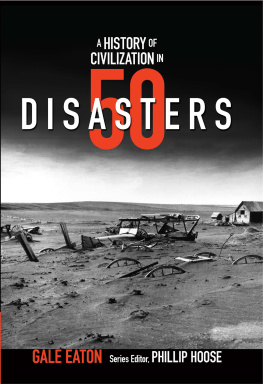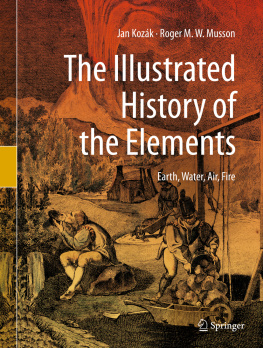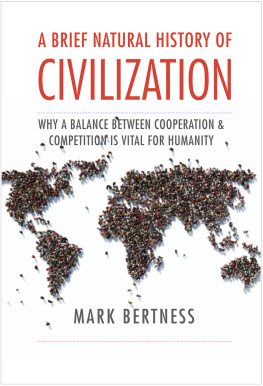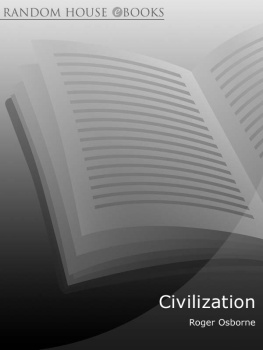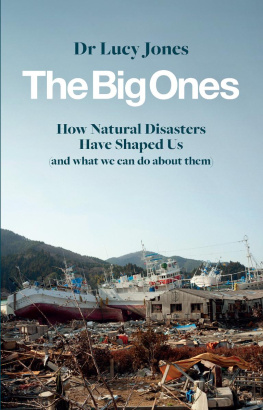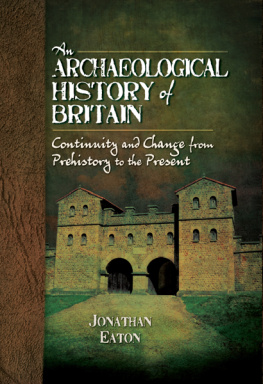


Tilbury House Publishers
12 Starr Street, Thomaston, Maine 04861
800-582-1899 www.tilburyhouse.com
First hardcover edition: November 2015
ISBN 978-0-88448-383-0
First paperback edition November 2015
ISBN 978-0-88448-489-9
Text Copyright 2015 Gale Eaton
Introduction Copyright 2015 Phillip Hoose
All rights reserved. No part of this publication may be reproduced or transmitted in any form or by any means, electronic or mechanical, including photocopying, recording, or any information storage or retrieval system, without permission in writing from the publisher.
Library of Congress Cataloging-in-Publication Data
Eaton, Gale.
A history of civilization in 50 disasters / Gale Eaton.
pages cm (History in 50)
Audience: Ages 12 and up.
ISBN 978-0-88448-383-0 (hardcover) ISBN 0-88448-383-5 (hardcover) ISBN 978-0-88448-489-9 (pbk.) ISBN 0-88448-489-0 (pbk.) 1. DisastersHistoryJuvenile literature. 2. Natural disastersHistoryJuvenile literature. 3. World historyJuvenile literature. I. Title. II. Title: History of civilization in fifty disasters.
D24.E197 2015
909dc23 2015031010
Text designed by Janet Robbins, North Wind Design and Production
Cover designed by John Barnett, 4 Eyes Design
Some of the images used in this book are licensed under a Creative Commons commercial-use license (versions 1 - 4); see http://creativecommons.org/licenses/by/4.0/. Credits are found next to the images within the text. For images given secondary additional use, refer to the principal use within the text for credit information.
Printed in China through Four Colour Print Group, Louisville, Kentucky
15 16 17 18 19 20 4CM 5 4 3 2 1
CONTENTS










PRESENTING THE HISTORY IN 50 SERIES
BY PHILLIP HOOSE
T he History in 50 series explores history by telling thematically linked stories. Each book in this series includes 50 illustrated narrative accounts of people and eventssome well-known, others often overlookedthat, together, build a rich connect-the-dots mosaic and challenge conventional assumptions about how history unfolds. In A History of Civilization in 50 Disasters, for example, Gale Eaton weaves tales of the disasters that happen when civilization and nature collide. Volcanoes, fires, floods, and pandemics have devastated humanity for thousands of years, and human improvements such as molasses holding tanks, insecticides, and deepwater oil rigs have created new, unforeseen hazardsyet civilization has advanced not just in spite of these disasters, but in part because of them.
History in 50 is a canny, fun, and logical way to present history. The stories are brief, lively, and richly detailed. They work as narrative and also as bait to lure readers to well-selected source material. History in these books is not a stuffy parade of generals, tycoons, and industrialists, but rather a collection of brief, heart-pounding non-fiction narratives in which genuine calamities overtake us, genuine athletes leap skyward on feet of clay, and genuine discoverers labor bleary-eyed through the night to take us to the depths of the ocean, explore the vast reaches of space, unlock the genetic code, or develop a vaccine that saves millions of lives. Its history that bellows and shivers and roars.
And who doesnt love lists? Making a list of fifty great episodes of any kind invitesdemandsdebate. Even if the events arent ranked (theyre in chronological sequence), something always gets left out. I just finished reading A History of Civilization in 50 Disasters. I paged wide-eyed through plagues, eruptions, famines, microbes, and vaccines that worked or didnt. From my reading chair I took on dust storms, meltdowns, and epidemics at all scales that claimed my unwavering attention. When I closed the book and looked up, blinking, my first thought was, Unbelievable. How have we ever made it through all this?
But these feelings quickly gave way to a surge of indignation: Where was the Tri-State Tornado of March 1925? Its my favorite disasterone that hit home. Actually a series of twisters, the Tri-State storm ripped through Missouri and Illinois before closing in on my great-grandparents in southwestern Indiana. Seven hundred people were killed in what is commonly ranked as the worst tornado ever. Contemporary meteorologists agreed that it was surely a category five twister, and yet it didnt make the top fifty disasters? I needed to lodge a protest.
But then I realized that my pique was a good thing. The book had made me care. The stories had swept over me and shaken my certainty like the 1906 San Francisco earthquake. And I realized that many readers will have the very same reaction: Hey, wheres my favorite episode? It will spur debate. I imagine smart teachers asking students to describe their own favorite historical episodes, backing up findings with research. I imagine readers of all ages heading back to their bookshelves to support their arguments.
History is rewarding, but in my experience most people have to be led to it. So-called Reluctant Readers are mainly reluctant to be bored. They require, and deserve, historical material that meets them partway. History with menacing characters, even if some of them are invisible (germs); history replete with tough decisions; crisp episodes that leave you wondering what you would have done in that situation; history moved by people just like us, often from the humblest of origins, struggling in their daily lives while reaching for greatnessthats the history that works for most readers. And that is the history we have in this brilliant new series. The writing is clear and exciting, punchy stories that are, on average, two pages long. I have high hopes for the History in Fifty series, and it gives me pleasure to enthusiastically endorse it. Why? Because it works.
Next page
